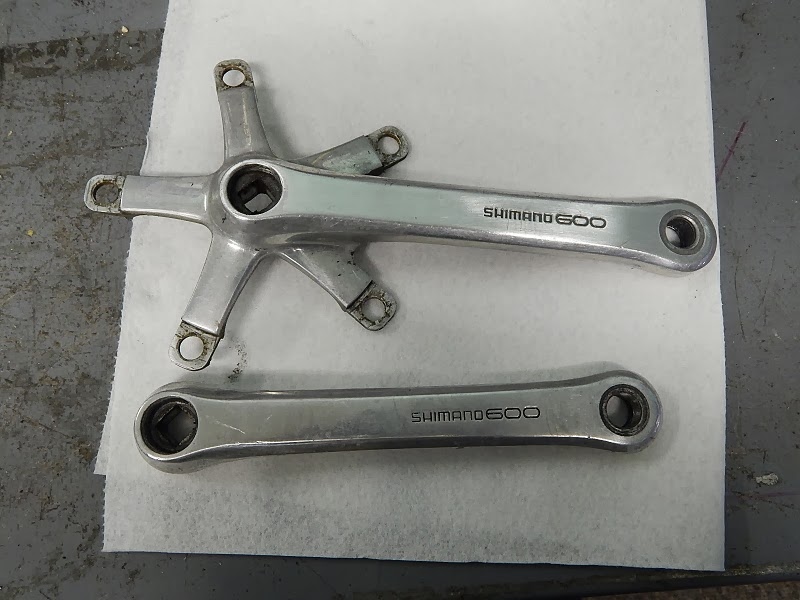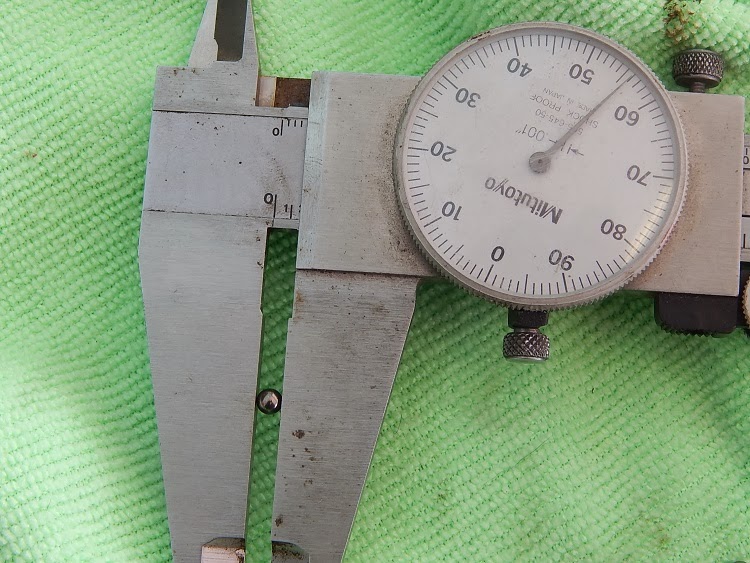Everybody like shiny stuff. Heck we even like shiny dogs. You know those dog food producers that advertisement their dog food gives your dog a shiny coat? So if your dog is shiny, does that mean he's healthy? If my hair was shiny I'd be regarded as dirty and oily. Anyway...
 Here is a set of old Shimano 600 crankarms. Shimano changed the name from 600 to Ultegra sometime in the 90's. I've decided to give them a little clean up and polish.
Here is a set of old Shimano 600 crankarms. Shimano changed the name from 600 to Ultegra sometime in the 90's. I've decided to give them a little clean up and polish.
 Here is a set of old Shimano 600 crankarms. Shimano changed the name from 600 to Ultegra sometime in the 90's. I've decided to give them a little clean up and polish.
Here is a set of old Shimano 600 crankarms. Shimano changed the name from 600 to Ultegra sometime in the 90's. I've decided to give them a little clean up and polish.A few scratches and dents, but still functional.
I start with fine emery paper, then progress to 360, 400, 600, 1000, then 1500 grit sandpaper supported by a file or wood block. That helps to keep the flat profiles flat. I wanted to preserve the profiles. If I wanted to I could remove the angular features and make it oval. It's and easy process, you just need patients.
Think of sanding as the process of leaving the finish with the same size scratches. Once all the scratch become the same size, you progress to finer paper. As the scratches get more uniform along the way, the paper starts to get more traction, and the sheen get shinier and shinier.
Sometimes the crankarm ends need a file to remove the scratches.
Now just small uniform scratches. Now time for sand paper, and blend it in with the rest of the cranks.
Getting shine.
Now compare. I've got an almost mirror like finish.
after the sanding I followed with some Mother's Mag polish. I had some scratches that would not come out, but it's still 90% better looking than before.














































